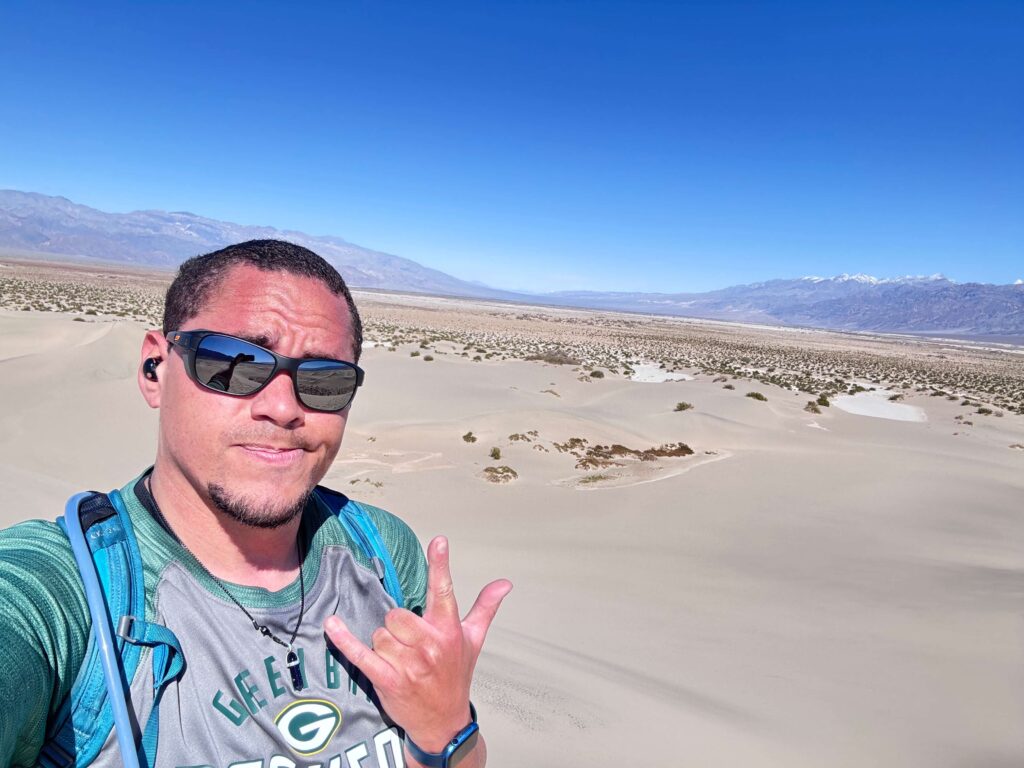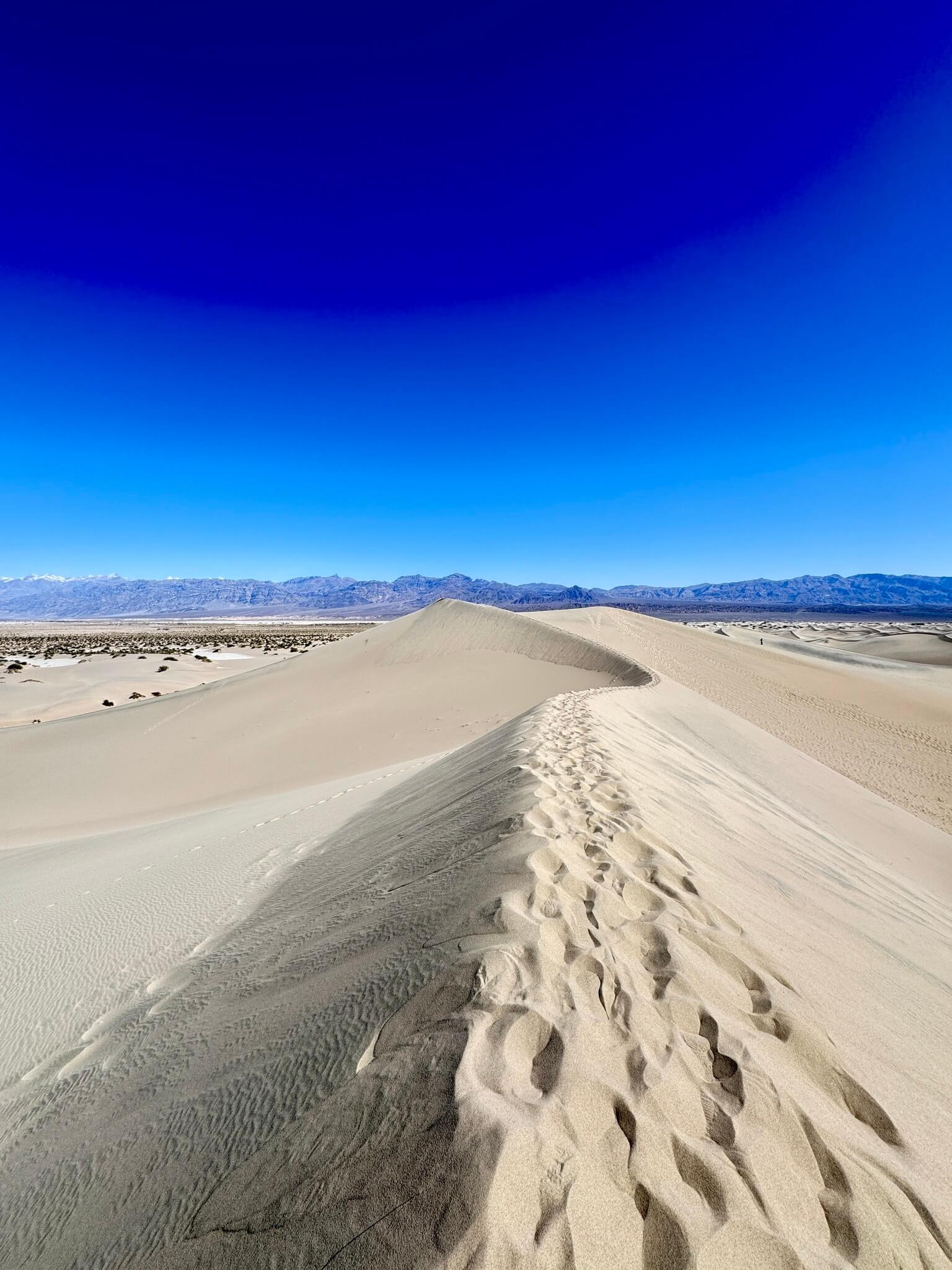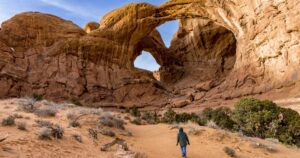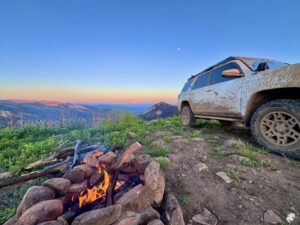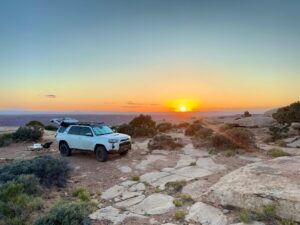Quick Facts:
Location: Death Valley, California
Coordinates: 36.606462846633576, -117.11711840179653
Length: 2 Miles
Difficulty: Easy
Elevation Gain: 200’
Dog Friendly: No
Introduction:
Walking through Mesquite Flat Sand Dunes feels like stepping into a dream. These golden dunes stretch as far as the eye can see, rippling under the desert sun. There’s no set trail, just an endless sea of sand waiting to be explored. Whether you’re hiking at sunrise for the best light or venturing out under the stars for a surreal night hike, this spot is pure magic.
Getting to the Sand Dunes:
Mesquite Flat Sand Dunes are easy to find, sitting right off CA-190 near Stovepipe Wells. If you’re coming from Furnace Creek, it’s about a 30-minute drive west. From the Stovepipe Wells Village, it’s just a couple of miles east. The dunes are visible from the road, so there’s no way to miss them. Death Valley National Park charges a $15-$30 fee or you can use the America the Beautiful Pass to enter.
Parking Information:
There’s a large parking lot at the trailhead, and it rarely fills up. You won’t find water or shade here, so come prepared. Restrooms are available, but they’re basic. Since there’s no official trail, you can start your hike right from the parking area and head toward the tallest dune.
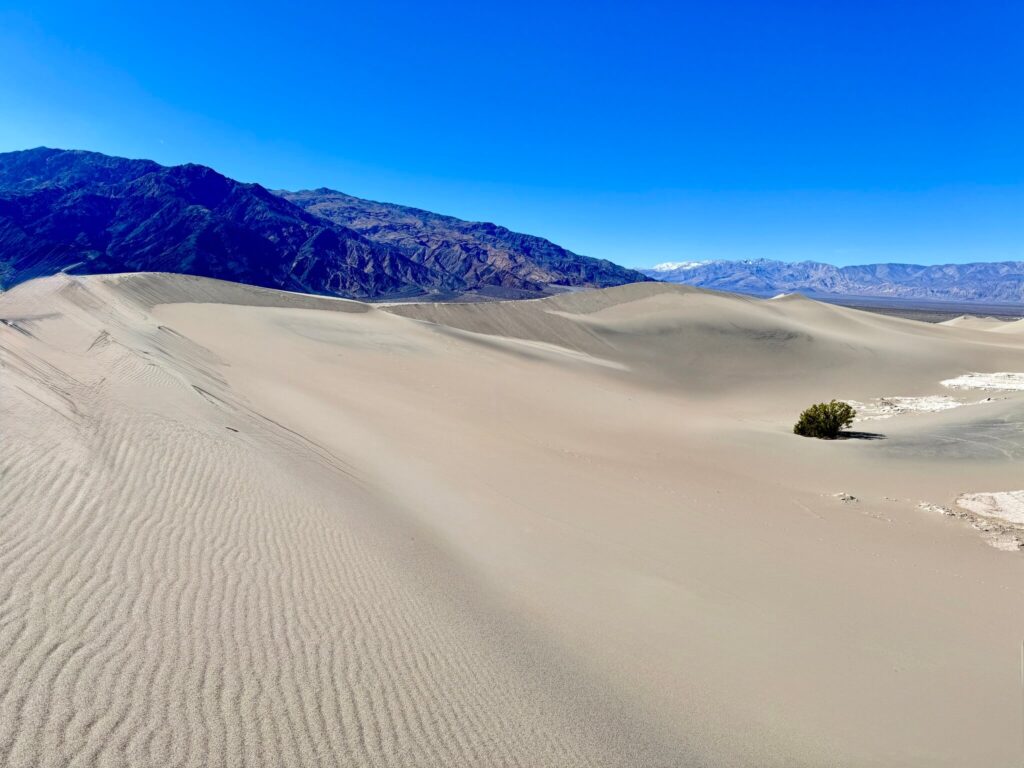
Landscape Description:
Unlike traditional hikes, there’s no marked path through the Mesquite Flat Sand Dunes. You pick your own route, making every experience unique. The tallest dune stands at around 100 feet, but the rolling landscape creates an illusion of endless peaks and valleys. Soft sand makes walking much harder than it looks, and every step feels like a mini workout.
The dunes are constantly reshaped by the wind, with sharp ridges and smooth slopes creating stunning patterns. Look closely, and you’ll see tracks left by desert wildlife, kangaroo rats, lizards, and even sidewinder snakes. If you visit at sunrise or sunset, the light creates dramatic shadows that make the dunes look even more unreal.
Trail Difficulty and Length:
Since there’s no set trail, the hike is as long or as short as you want. Most people trek about 2 miles round trip to reach the highest dunes and take in the view. Walking on sand is tiring, so it feels tougher than the mileage suggests. The challenge comes from the loose footing and the heat, not elevation gain.
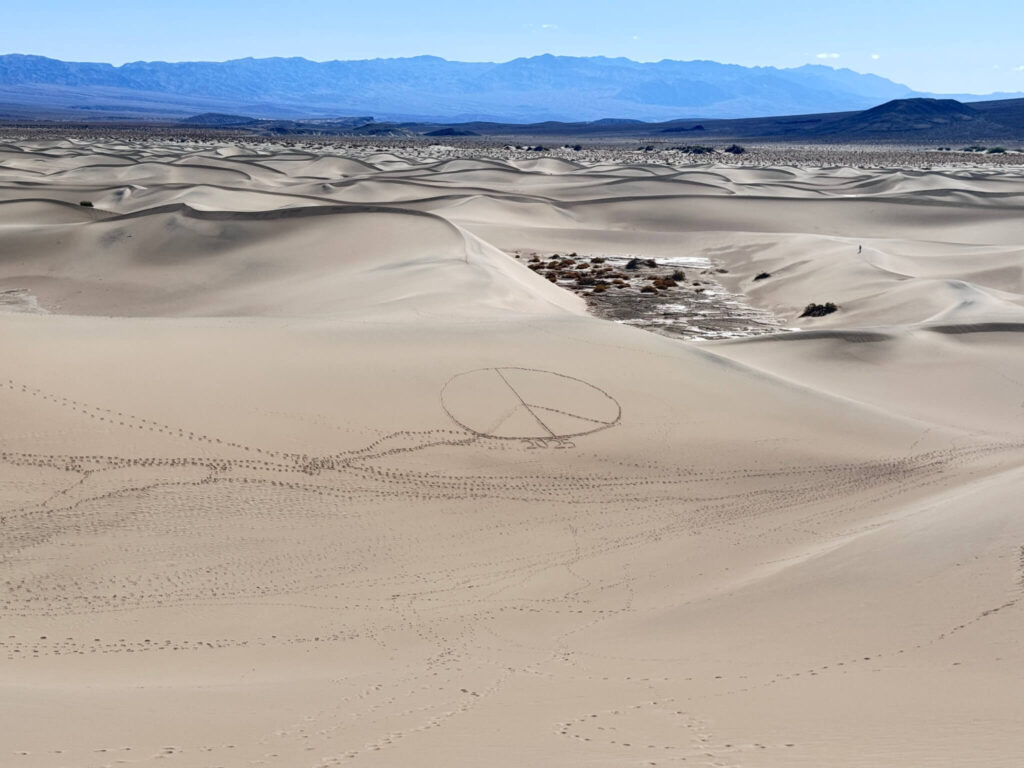
Dog-Friendly?
Sadly, no. Like most trails in Death Valley, dogs are not allowed at the Mesquite Flat Sand Dunes. The sand gets incredibly hot, which isn’t safe for their paws anyway.
Park Rules and Regulations:
Leave no trace, footprints disappear quickly, but trash sticks around. Pack out everything you bring in. The dunes are a fragile ecosystem, so avoid disturbing any wildlife you come across. It’s tempting to sandboard down the slopes, but this is a protected area, so save that for other locations.
Other Hikes Nearby:
For a completely different kind of landscape, check out Golden Canyon or Mosaic Canyon, both within a short drive. If you want another unique sand dune experience, head to Eureka Dunes, the tallest dunes in California, though they’re much harder to reach.
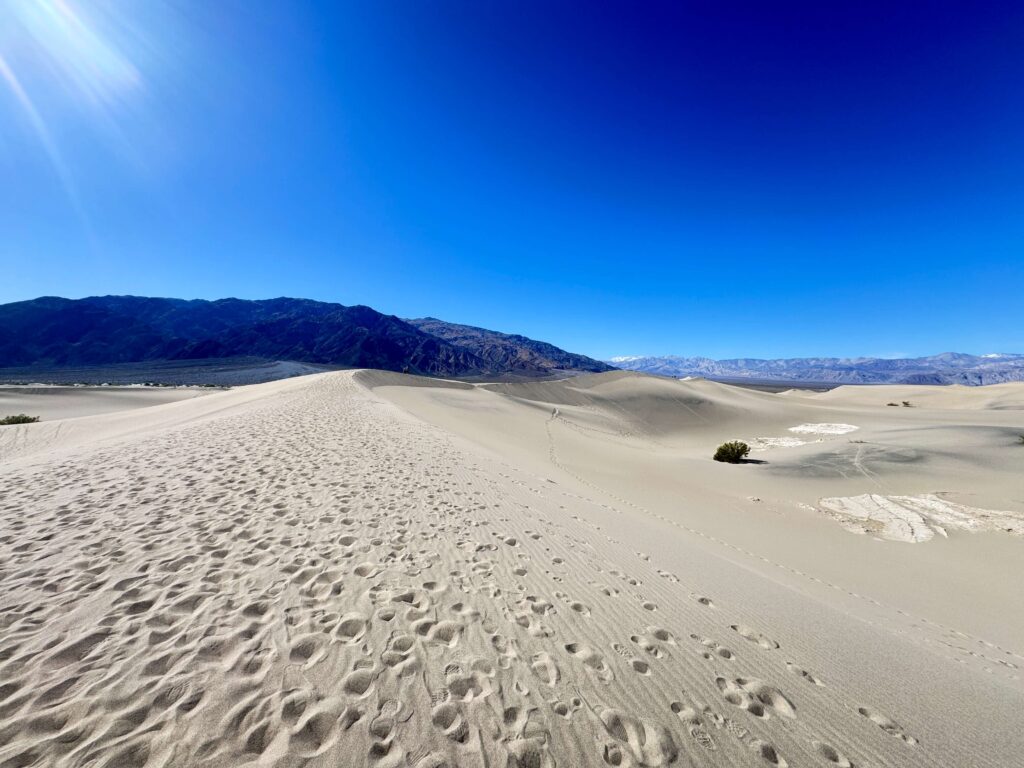
Non-Hiking Attractions Nearby:
After exploring the dunes, take a scenic drive to Badwater Basin, the lowest point in North America. Stop by Artist’s Palette to see rainbow-colored hills or head up to Dante’s View for a sweeping overlook of Death Valley. If you’re interested in history, Harmony Borax Works offers a glimpse into the region’s mining past.
Best Time to Visit:
Summer? Forget about it. The heat is brutal, and the sand turns into a frying pan. The best time to visit is from November to March, when temperatures are mild. Sunrise and sunset are the best times for hiking, not just for cooler temperatures but also for the breathtaking light and long shadows on the dunes. If you’re up for a nighttime adventure, a full moon hike on the dunes is an unforgettable experience.
